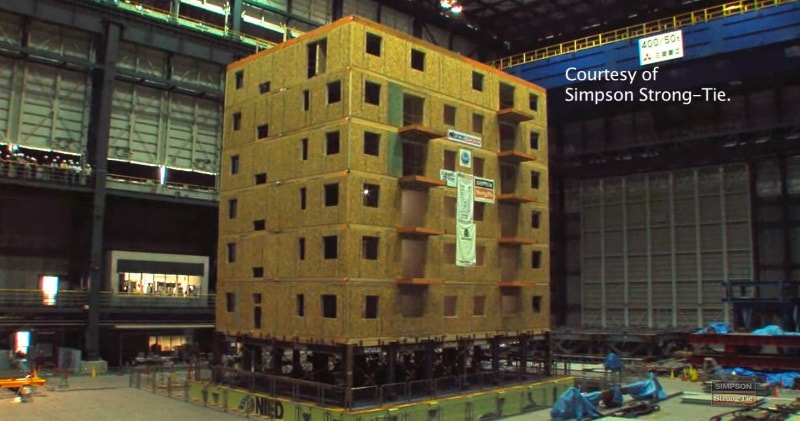As Townsend explains, in an earthquake, the ground doesn’t just thrust from one side as waves move outward from the quake’s epicenter: Displacement occurs in all three directions, so seismographs record ground motion along the X, Y, and Z axes.
image/text credit: Simpson Strong-Tie
The 3D forces make structural behaviour more difficult to predict and prepare for. An unique feature of the E-Defense is that it can faithfully replay any recorded earthquake in all three of its vectors.
Simpson Strong-Tie in collaboration with researchers from Colorado State University conducted a 7.5 magnitude test on a seven-story wood-framed condominium tower – the largest seismic test ever.
Advertisement
Cameras record the shaking inside and outside the structure being test, capturing its ability to sway and absorb major shocks. Some experiments are designed to identify weak points that can lead to the structure’s collapse. Other tests look at two houses side-by-side, an unaltered house and one that has been retrofitted to check on the efficacy of the earthquake engineering.











